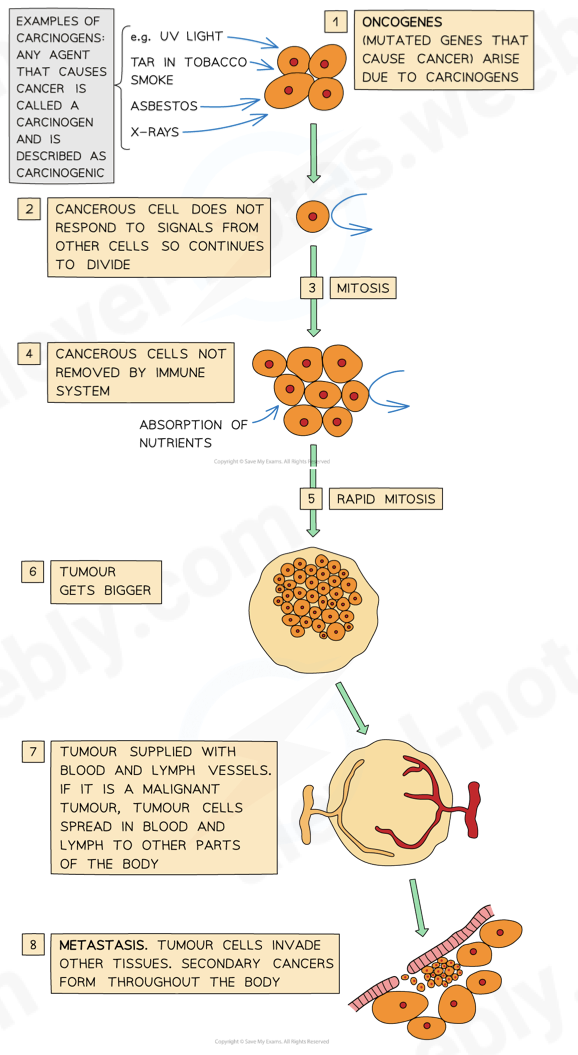5 the mitotic cell cycle
1/32
There's no tags or description
Looks like no tags are added yet.
Name | Mastery | Learn | Test | Matching | Spaced |
|---|
No study sessions yet.
33 Terms
What is a chromosome
Thread-like structure made of DNA
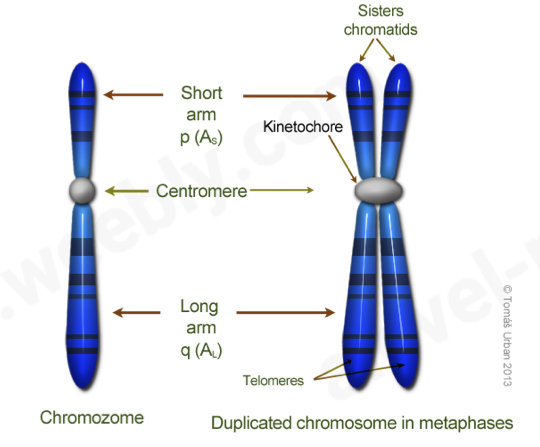
What is a Chromatid?
one half of two identical copies of a replicated chromosomes
MILLIONS OF NUCLEOTIDES → LENGTH OF DNA → CHROMATID
{ 1. Phosphate Group 2. Pentose Sugar 3. Nitrogenous Base }- Adenine-Thymine-Cytosine-Guanine
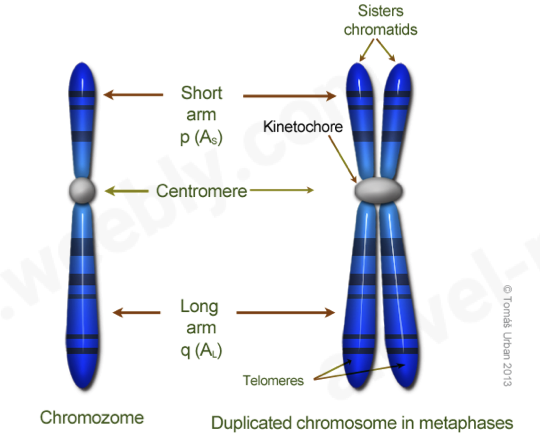
What is a Centronomere?
the region of a chromosome to which the microtubules of the spindle attach via the kinetochore, during cell division.
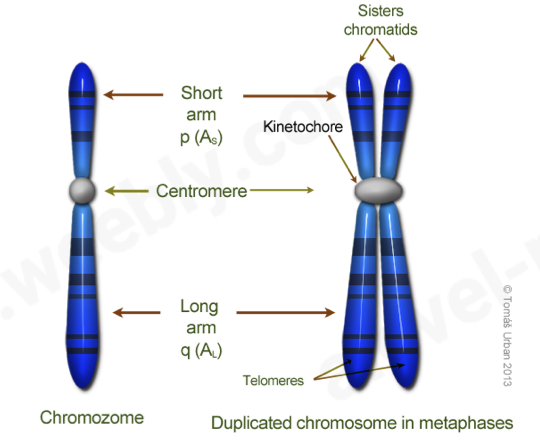
What are Telomeres?
protective sequence of nucleotides found at the ends of chromosomes
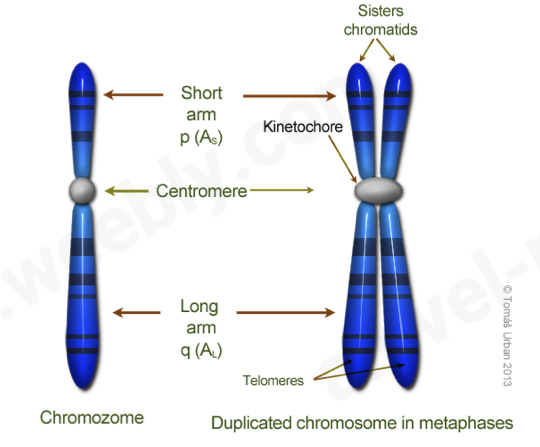
What are histone proteins?
basic proteins which associate with DNA to form nucleosomes
What are chromatin?
a complex of nucleic acids (DNA and RNA) and other proteins whose primary function is to compress DNA into a compact unit which will fit inside the nucleus
What is DNA (deoxyribonucleic acid)?
DNA is the molecule of inheritance and is made up of a series of genes.
a gene is a section of DNA that codes for one protein
DNA molecules are in sister chromatids so that their
genes are identical
when cells divide, one chromatid goes into one daughter cell and the other to the other daughter cell, making the daughter cells genetically identical
size of DNA molecule – 2nm
the total length of DNA of 46 chromosomes of an adult human is about 1.8m, this needs to be fit into a nucleus of 6μm
therefore, the DNA is wound around the outside of proteins called histones
these histone proteins (and therefore, nucleosomes) condense DNA to chromatin
Outline Nucleosomes
11nm wide by 6nm long
made of 8 histone molecules
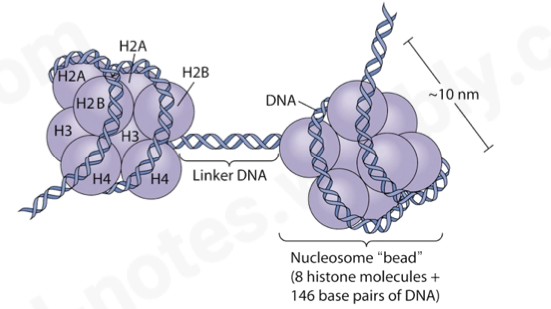
What are telomeres?
cap the ends of chromosomes and are needed for successful cell division
permit continued replication
prevent the loss of genes
telomeres are made of DNA with short base sequences that are repeated multiple times
the copying enzyme, telomerase, stops a little short of the end of DNA
more bases are added, which don’t have useful information, but allows telomerase to complete copying the meaningful DNA
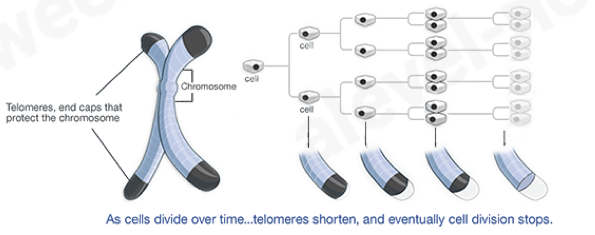
What is the cell cycle?
Processes of growth, development, and reproduction.
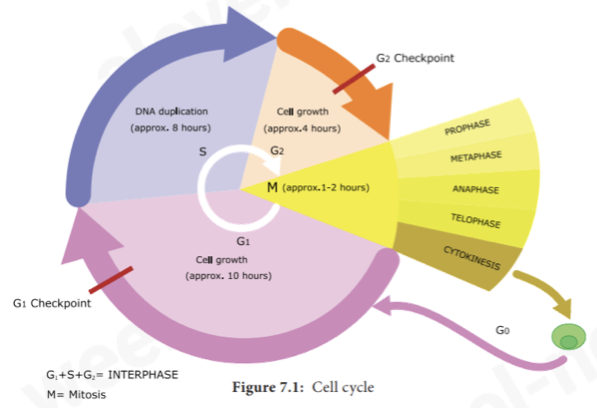
What is Interphase (G1 + S + G2) in the cell cycle?
Longest phase
Normal cell work/functions
The cell grows to its normal size
Time spent between cell divisions
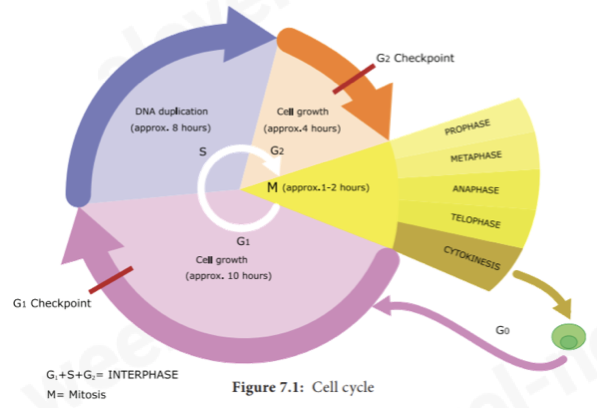
Outline G1 phase
cells make RNA, enzymes and other proteins needed for growth
at the end of G1 phase, the cell becomes committed to dividing or not
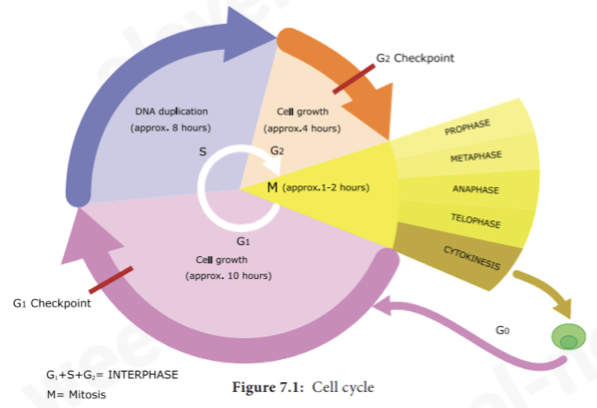
Outline S phase
synthesis of DNA
the DNA in the nucleus replicates so that each chromosome consists of 2 identical chromatids: DNA replication
Outline G2 phase
the cell continues to grow
new DNA is checked, and any errors are repaired
preparations are made to start cell division e.g., a sharp increase in production of the protein tubulin is observed which is needed to make microtubules for mitotic spindle
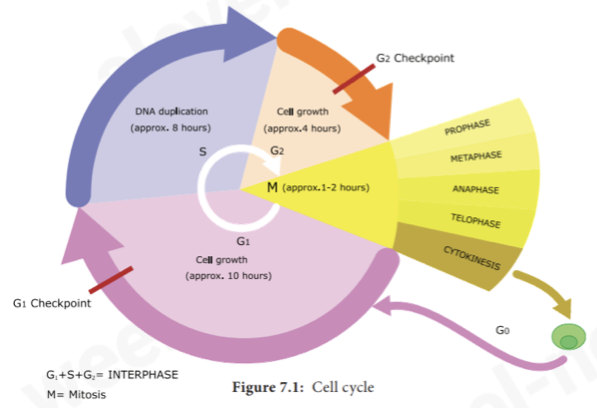
Outline M phase (mitosis)
Nuclear division that produces 2 genetically identical daughter cells.
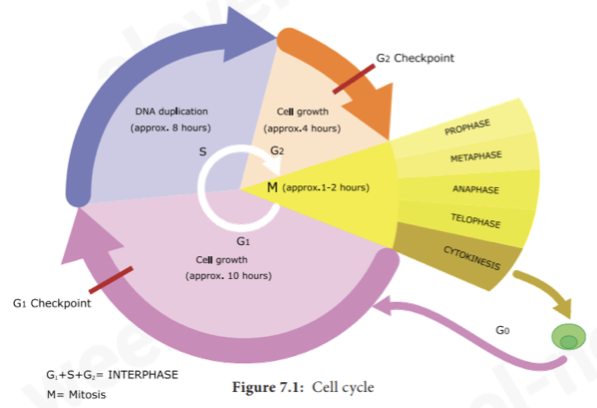
What are the functions of mitosis
growth
cell replacement
repair of tissues
asexual reproduction
immune response (cloning B and T-lymphocytes)
What are the 4 Stages of mitosis
Prophase Metaphase Anaphase Telophase
Outline Prophase
centrosomes migrate to opposite poles of mitotic spindle
chromatin starts to condense
nuclear envelope and nucleolus begin to disappear
centrosomes and migrate to opposite poles of the cell
and form poles of mitotic spindle
asters and spindle fibres form
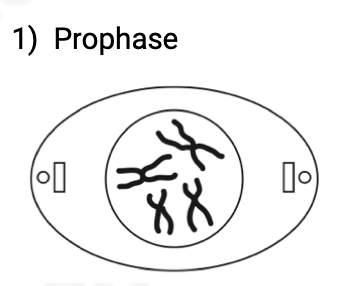
Outline Metaphase
centrosomes are at poles of the cell and organise the production of spindle microtubules
chromosomes line up across equator of the spindle
each chromosome splits at centromere
chromosomes start to be pulled apart by microtubules
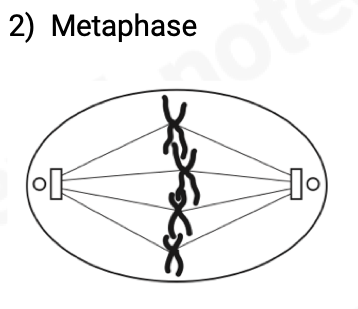
Outline Anaphase
chromatids move to opposite poles, centromeres are first pulled by microtubules
spindle fibres contract and chromosomes are pulled to the opposite ends
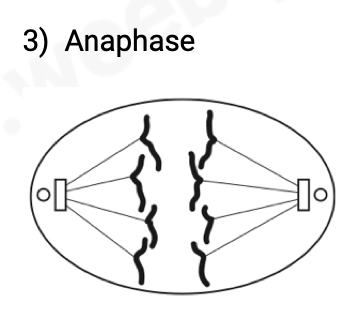
Outline Telophase
nuclear envelope and nucleolus reforming
nucleus divides
chromosomes are at poles of cell
What is Cytokinesis?
The division of cytoplasm.
Outline the process of cytokinesis in plants
cell plate forms across equator of cell; cellulose, cell wall laid down
cytoplasm is hence divided into 2
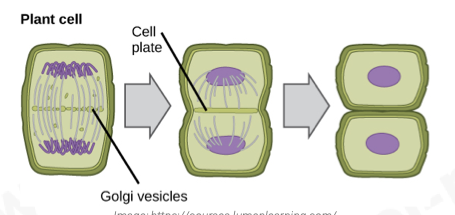
Outline cytokinesis in animal cells
contractile ring forms, pushing the equator of cell inwards, forming a cleavage furrow
this cleavage furrow deepens as active filaments in the ring contract
eventually the cell splits into 2
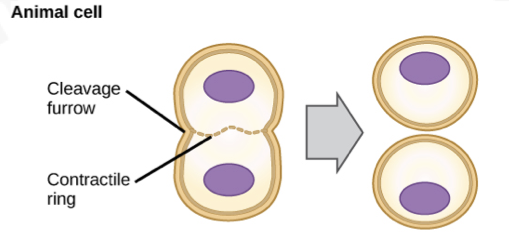
What are the differences in plant and animal cell mitosis?
plant cells don’t have any visible centriole or aster
in plant cells, daughter cells get separated by cell
plate, there is no cleave furrow formation
What are kinetochores?
protein molecules which bind to DNA in centromere and microtubules
bundles of microtubules called spindle fibres extend from kinetochores to poles of spindle during mitosis
What is a Centronomere?
needed for separation of chromatids during mitosis
site of attachment of spindle microtubules
each metaphase chromosome has 2 kinetochores at its centromere and microtubules
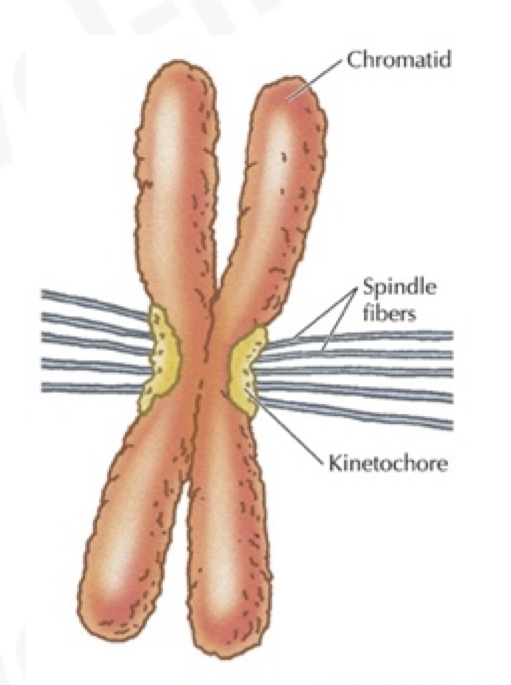
What is a Centrosome?
an organelle found in animal cells that acts as the microtubule organising centre (MTOC) for construction of the spindle
present at the poles of cell
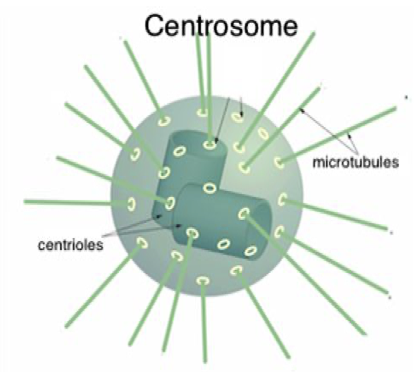
What are Stem cells?
Stem cells are cells that can divide an unlimited number of times by mitosis.
extent of the power of a stem cell to produce different cell types is called its potency
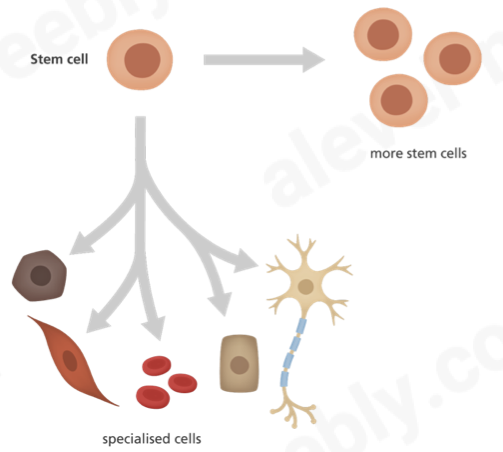
What is Stem cell therapy?
introduction of new adult stem cells into damaged tissue to treat a disease or injury
What is Cancer?
a result of uncontrolled mitosis; cancerous cells divide repeatedly and form a tumour
What is a carcinogen?
agent that causes cancer e.g., radiations (UV, X-rays), tar, nuclear fallout
Outline the cellular changes that occur in the development of cancer?
mutation occurs in gene responsible for cell division leading to formation of an oncogene from a proto-oncogene
this causes uncontrolled cell division
coordination of cell cycle is lost (cell does not receive/respond to signals that tell it to stop dividing)
loss of function and lack of specialisation occurs
a tumour is formed, an irregular mass of cells showing an abnormal change in shape
